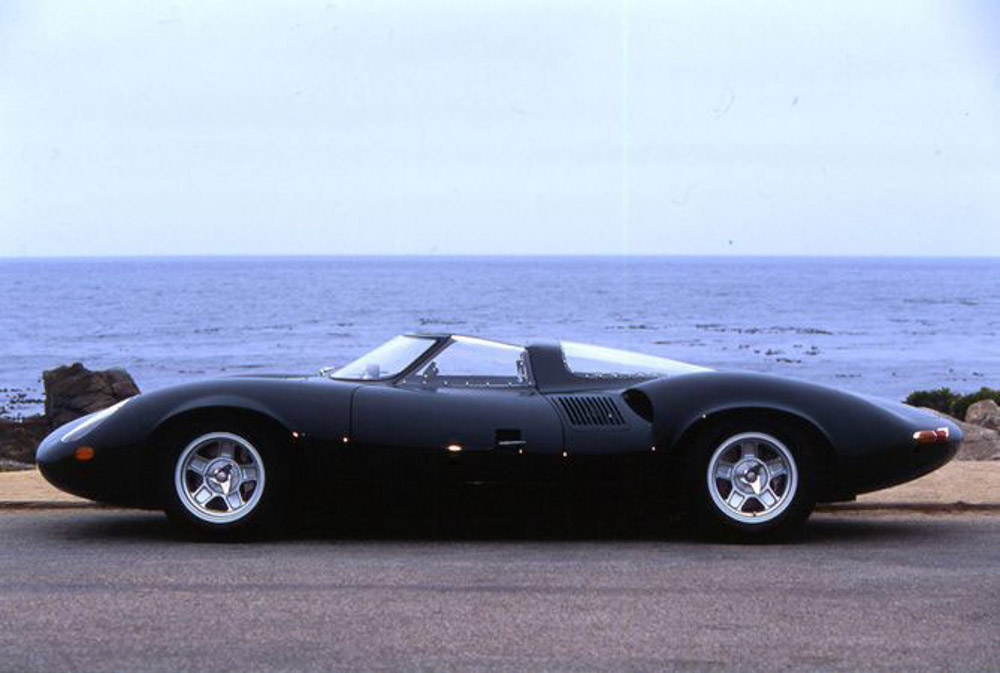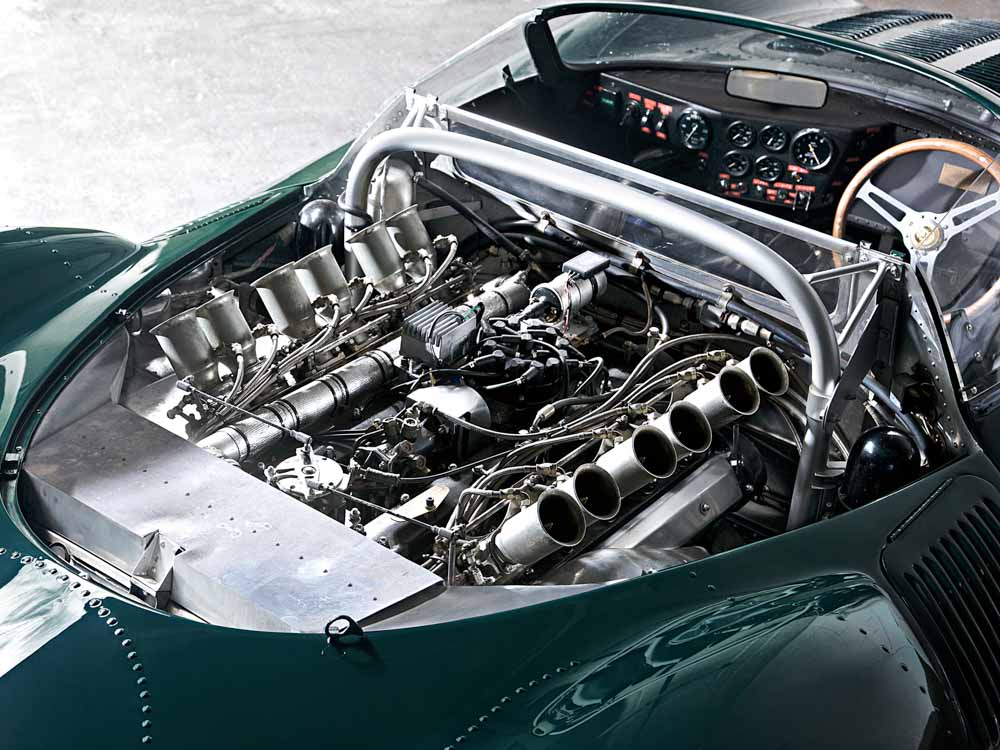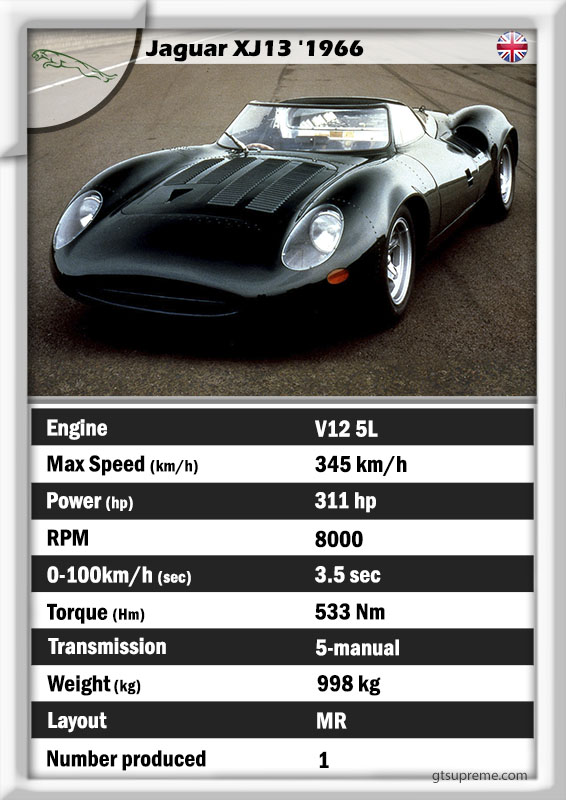
“The car that can be seen today is not an exact reproduction of the original”
The idea of a mid-engined prototype was first mooted in 1960, but it was not until 1965 that construction began, with the first car running by March 1966.
The aluminium body was designed by Malcolm Sayer, the aerodynamicist responsible for the Jaguar C-type, D-type, E-type and XJS, who used his Bristol Aeroplane Company background to build it using techniques borrowed from the aircraft industry.
 The development of the XJ13, although treated seriously by the designers, was never a priority for company management.
The development of the XJ13, although treated seriously by the designers, was never a priority for company management.
Download Jaguar XJ13 ‘1966 for Assetto Corsa (tyres V10, greatly made)

Performance
The XJ13 had mid-engine format with the 5.0 litre V12 engine mounted behind the driver, used as a stressed chassis member together with the five-speed manual ZF Transaxle driving the rear wheels.
 The front suspension wishbones were similar to that of the E-Type, however where the E-Type used longitudinal torsion bars, the XJ13 had more conventional coil spring/damper units. At the rear there again remained similarities with the E-Type—the use of driveshafts as upper transverse links—however the rest was quite different, with two long radius arms per side angling back from the central body tub together with a single fabricated transverse lower link.
The front suspension wishbones were similar to that of the E-Type, however where the E-Type used longitudinal torsion bars, the XJ13 had more conventional coil spring/damper units. At the rear there again remained similarities with the E-Type—the use of driveshafts as upper transverse links—however the rest was quite different, with two long radius arms per side angling back from the central body tub together with a single fabricated transverse lower link.
What for?
The prototype was tested at MIRA and at Silverstone, which confirmed that it would have required considerable development to make it competitive. The prototype was put into storage and no further examples were made.
The publicity team wanted a shot of the XJ13 at speed for the opening sequence of the film launching the V12 E-Type. On 21 January 1971, the XJ13 was taken to MIRA for the filming with Jaguar test driver Norman Dewis at the wheel. Unfortunately, a rear tyre (which had been plugged to cure a slow leak) deflated at speed, the car rolled heavily and XJ13 was nearly destroyed although Norman Dewis was fortunately unharmed. The wreck of the car was put back into storage.
Further history of XJ13
Some years later, Edward Loades spotted the crashed XJ13 in storage at Jaguar and made the offer to ‘Lofty’ England that his company Abbey Panels should rebuild the car. The car was rebuilt, to a specification similar to the original, using some of the body jigs made for its original construction and at a cost of £1000 to Jaguar.
The XJ13 finally made its public debut in July 1973 when ‘Lofty’ drove it around Silverstone at the British Grand Prix meeting and it is now displayed at the Heritage Motor Centre Museum at Gaydon in the UK.
XJ13 other specs
- Front brake size: 22.4 x 303.3 mm
- Rear brake size: 22.4 x 295.3 mm
- Front wheels: F 38.1 x 17.8 cm / 15 x 7 in
- Rear wheels: R 38.1 x 23.8 cm / 15 x 9.375 in
- Suspensions: double wishbones, coil springs over adjustable Armstrong shock absorbers
- Length / Width / Height: 4810 mm / 1800 mm / 1000 mm
- Wheelbase: 2410 mm
- Track (fr/r): 1420 mm / 1420 mm
The JAG XJ13 gallery

 Add to favorites
Add to favorites




















